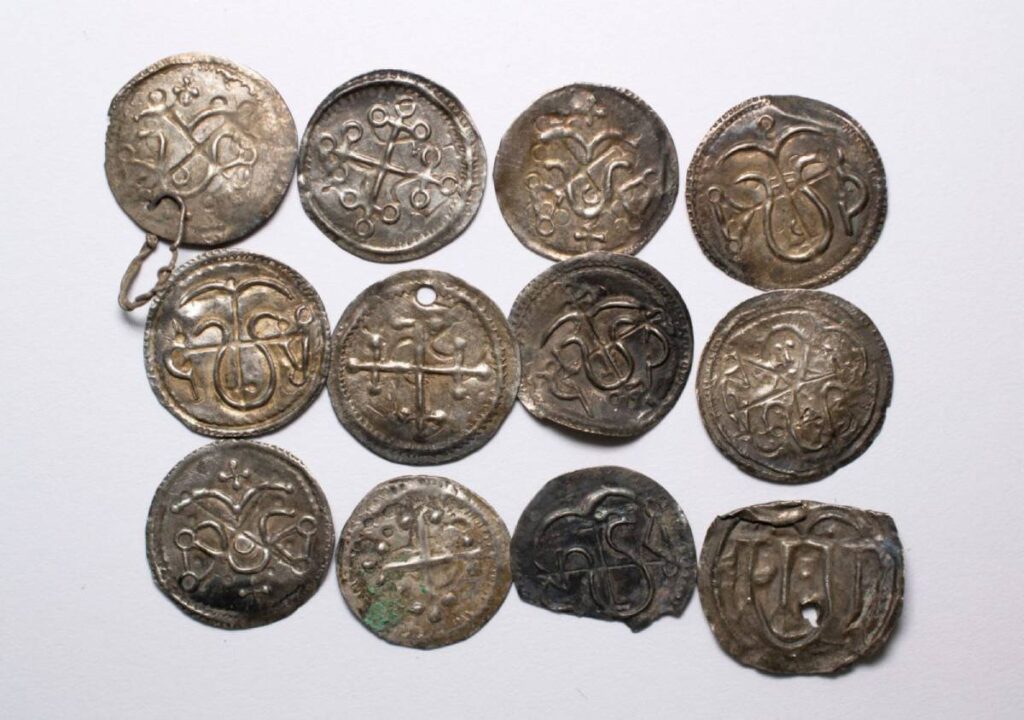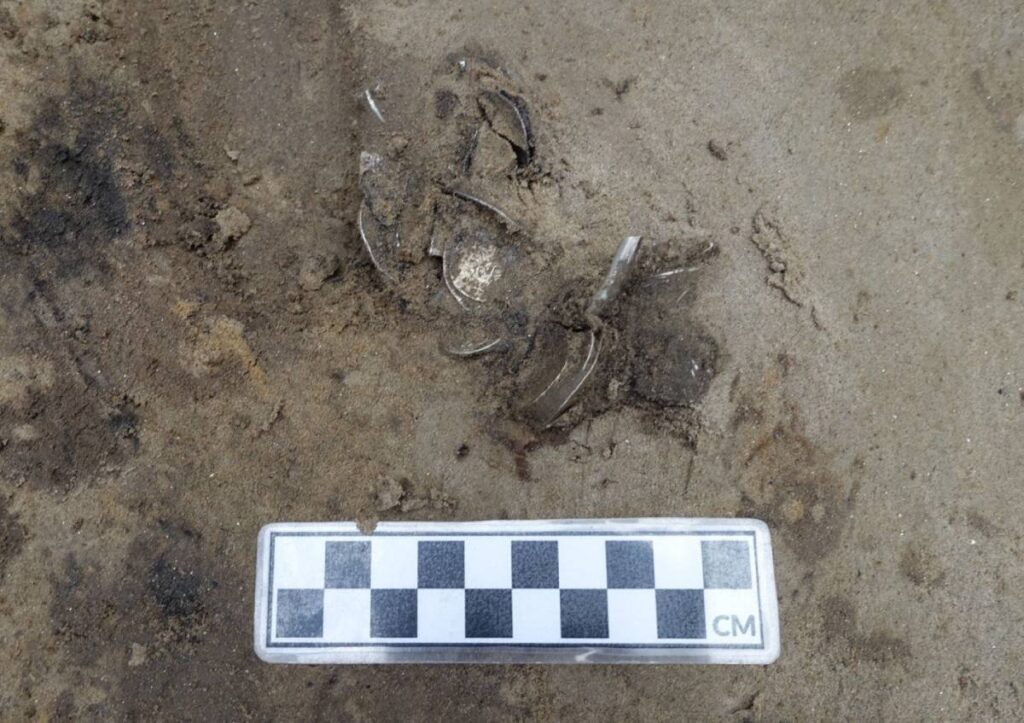Rare silver coins minted by Viking king Harald Bluetooth were Discovered in Finland

Rare silver coins minted by Viking king Harald Bluetooth were Discovered in Finland
Metal detectorists discovered a silver cache in Virmo, located between Turku and Rauma in Southwest Finland. The cache held rare minted by Viking king Harald Bluetooth.

In May of 2022, Finnish metal detectorists discovered a silver cache from the Viking Age in a field in Mynämäki, a municipality of Finland located in the Southwest Finland region.
The follow-up excavations carried out by the Finnish Heritage Agency uncovered silver coins and pieces of silver jewellery.
The hoard included 12 coins minted by Viking king Harald Bluetooth. They are considered very rare, as only a couple of such coins have previously been found in Finland.
Furthermore, researchers were able to make a noteworthy discovery – the objects were brought to Mynämäki from Poland.
METAL DETECTORIST DISCOVERS TREASURE, IMMEDIATELY CALLS NATIONAL MUSEUM OFFICE
The batch of silver objects was found during a metal-detecting trip by enthusiasts of the Vakka-Suomen Metallinetsijät association.
“My hands were shaking… This was my most spectacular find so far and the first intact cache I’ve found,” metal detectorist Oskari Heikkilä said.
After stumbling upon the find, Heikkilä stopped digging, left the rest of the objects in their place, and reported his findings to the National Heritage Agency.
The following week, archaeologists visited the site to carry out trial excavations. A small excavation area was processed at the location of the find, and the rest of the silver cache was carefully lifted from the ground.
The investigations by the National Heritage Agency determined that the objects were densely concentrated, and they may have originally been left in, for example, a leather bag.
Small pieces of Iron Age pottery vessels were also found in the dark soil layer of the excavation area, which suggests that the site may have been inhabited. Mynämäki is known for many Iron Age sites and finds.
Now, the field area where the cache was found has been registered as a protected archaeological site, and metal detecting and digging will not be allowed there without the permission of the National Heritage Agency.
No further studies are currently planned.

SILVER COINS MINTED BY HARALD BLUETOOTH
Jani Oravisjärvi, the curator of the Finnish National Museum who investigated the coins, described the find as “important and interesting.”
“I got the initial information about the discovery directly from Oskari in the field, who sent me pictures of the discovery. My eyes almost immediately fell on Harald Bluetooth’s money, and I noticed four (of his) coins in the photographs.
“I knew we were now on the verge of an important and interesting discovery. It was a great privilege to be the first to get all the discovered coins and objects on my desk,” Oravisjärvi said, according to the Agency.
As many as 12 silver coins minted by the Viking king Harald Bluetooth (911–986 CE) were eventually identified, which makes the find exceptional.
In the past, only one or two similar coins have been found in Finland. In total, about one hundred silver coins were recovered from the place where the cache was found.
The find contains money from a range of around 250 years. The majority of the coins date to the last decades of the 9th century, but none of the coins in the cache date to the 11th century with certainty.

The origin of money is very diverse. Along with Iraq and Central Asia, the stash includes money from England, Denmark, Poland, Germany, Switzerland, and Strassburg, France.
“At that time, hundreds of different mints were operating in Europe. In addition, dozens of mints operated in the Caliphate and Central Asia.
“Furthermore, at that time, money circulated completely freely, so the place where the money was minted was not as important as it is today. The most important thing was the material of the money, i.e., silver,” Oravisjärvi explained.
Based on the composition, it is very likely that the silver treasure originated in Pomerania, the area of present-day Poland. One of the fragments of the silverware is identical to the plate buckles previously found in Pomerania.
“The origin of the money can almost always be identified. The problem is that the money is often from dozens of different places, making it difficult to tell where the cache originally came from. However, in the case of this discovery, we can do that”, Oravisjärvi said.
The discovery will now become part of the Archaeological Collections of the National Heritage Agency.